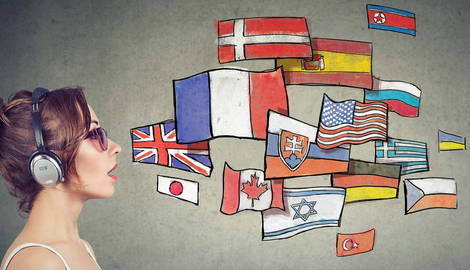
Learning a language is not an easy task. It requires many months, and often years of dedication and hard work to become fluent. Even getting to the point of being able to have a simple conversation is something that requires considerable effort. Of course, there are languages that take years to learn and there are some that can be mastered in just a few months (or even weeks!). Some languages can be perceived to be easier to learn than others. So, what is the easiest language to learn and why? The answer is not as simple as it might seem.
Factors to Consider

Some languages are much easier to learn than others. There are various factors that influence this, from syntax and grammar to spelling and lexical concepts. One of the most important factors to consider is the first language (L1) of the learner. L1 determines the learner’s concepts of syntax, grammar, lexical familiarity and experience with factors determining pronunciation. When languages share themes such as these, it becomes easier for the speaker of one to learn the other.

However, there have been efforts in the past where languages were constructed with the purpose of making them as effective and as simple to learn as possible. Esperanto and Interlingua were created for this purpose and have none of the quirks and exceptions that buck grammatical rules. These languages ultimately failed to find significant popularity however, and Esperanto has drawn criticism for being too Eurocentric in its grammar and lexical characteristics.
So, what’s the easiest, non-constructed language to learn from an English perspective?
Germanic Languages

English is a Germanic language. Although it shares many words with French (mainly as a result of the Norman influence on England), the top 100 most used words in English are all derived from Germanic roots.
Because of the grammatical roots, Germanic languages are considered to be easier to learn from an English perspective than many other languages. Some Germanic languages, however, are notoriously difficult to learn as they all have idiosyncrasies that pose major challenges for English speakers. Icelandic is often quoted as being one of the most difficult languages to learn.
English Evolution

English evolved from the languages spoken by the Angles, Saxons, and Jutes who originally came from areas now covered by the Netherlands, northern Germany, and Denmark. These peoples settled in England and eventually displaced the Celtic peoples. The various dialects of the newcomers made up the Anglo-Saxon or Old English language. The “English” people weren’t the last settlers (or invaders) to grace the shores of England, however.
The Danes/Norse conquered and settled over a period of several centuries, followed by the Normans who spoke French (but who were originally from Scandinavia). Anglo-Saxon absorbed the linguistic influences of the settler’s languages and evolved into Middle English and then to Modern English. There is, however, an alternative theory that suggests English evolved from the language spoken by the Danes and that it was influenced by Old English, as opposed to the other way round.
This theory neatly fits in with what the easiest language is for English L1 speakers to learn.
And the Answer Is…

Norwegian.
Exactly how and why is a subject of historical and linguistic debate, but it has its roots in the Viking era and Anglo-Saxon contact with the Danes. Of particular note is the fact that Norwegian, specifically Norwegian Bokmål, the most popular Norwegian dialect, has only one form of each verb per tense. For English speakers, the language is easy in that it has a word order that closely resembles that of English.
English also has a lot of loan words from Old Norse that are cognate with modern Norwegian such as to find (Old Norse: finna), to (Old Norse: til), and to hold (Old Norse: halda), amongst many others. Today, these words in Norwegian Bokmål are finne, til, and holde, respectively.
Conclusion
There is no single way to learn a language, and everyone has different abilities that make learning languages a dynamic exercise. As such, there is no single language that can be definitively spoken of as being the easiest to learn.
Trends, however, point in certain directions, and it can be tentatively concluded that from a general perspective, English speakers should have little trouble in mastering the Norwegian language.










